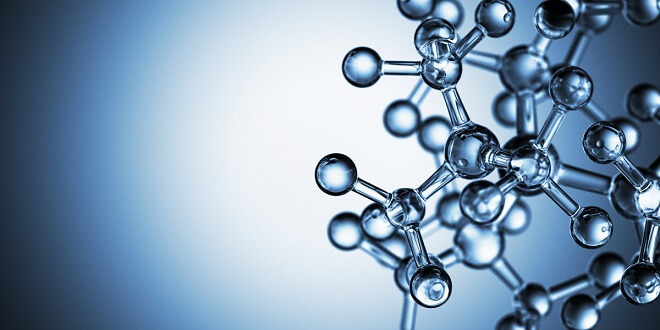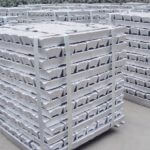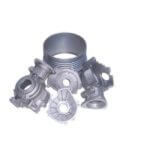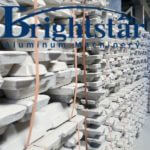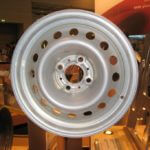Eight major metal elements that affect aluminum alloy performance
Eight major metal elements that affect aluminum alloy performance
The eight elements that affect the properties of aluminum alloys are: metal elements such as copper, silicon, magnesium, manganese, zinc, iron, titanium and boron, chromium and antimony.
They are different according to the use of the finished product.
The elements added during the processing have different melting points and different structures, so the compound formed with aluminum is also different, and thus the effect on the properties of the aluminum alloy is also different.
1. Metal element: copper
Copper is an important alloying element and has a certain solid solution strengthening effect.
In addition, CuAl2 precipitated by aging has a remarkable aging strengthening effect.
The copper content in aluminum sheets is usually between 2.5% and 5%, and the copper content is best at 4% to 6.8%. Therefore, the copper content of most hard aluminum alloys is within this range.
2. Metal element: silicon
The equilibrium phase diagram of Al-Mg2Si alloy alloy Mg2Si has a maximum solubility of 1.85% in aluminum, and the deceleration is small with the decrease of temperature.
In the deformed aluminum alloy, silicon is added to the aluminum plate alone and is limited to the welding material and a certain strengthening function if add silicon into aluminum.
3.Metal element: magnesium
The strengthening of magnesium by aluminum is remarkable. For every 1% increase in magnesium, the tensile strength will be improved about 34 MPa.
If 1% or less of manganese is added, it may supplement the strengthening effect.
4. Metal element: manganese
The maximum solubility of manganese in the solid solution is 1.82%. The strength of the alloy increases with increasing solubility.
When the manganese content is 0.8%, the elongation reaches a maximum.
The Al-Mn alloy is a long-term age hardening alloy, that is, it cannot be heat-treated.
Therefore, the addition of manganese can reduce the magnesium content, and at the same time reduce the tendency of hot cracking.
In addition, manganese can also precipitate the Mg5Al8 compound on average, improving corrosion resistance and welding performance.
5.Metal element: zinc
Al-Zn alloy equilibrium phase diagram 275 The solubility of zinc in aluminum is 31.6%, while at 125, its solubility drops to 5.6%. Zinc is added to aluminum alone.
Under the premise of deformation, the progress of the strength of the aluminum alloy is very limited, and there is a tendency of stress erosion cracking, which limits its application.
6. Metal element: iron and silicon
In the Al-Cu-Mg-Ni-Fe-based forged aluminum alloy, silicon is added as an alloying element in Al-Mg-Si-based forged aluminum and in Al-Si-based welding rods and aluminum-silicon forged alloys. Among other aluminum alloys, silicon and iron are common impurity elements and have a significant effect on the alloy function.
They are mainly present as FeCl3 and free silicon. When silicon is larger than iron, a β-FeSiAl3 (or Fe2Si2Al9) phase is formed, and when iron is larger than silicon, α-Fe2SiAl8 (or Fe3Si2Al12) is formed.
When the ratio of iron to silicon is not good, it will cause cracks in the casting. If the iron content in the cast aluminum is too high, the casting will be brittle.
7.Metal element: titanium and boron
Titanium is an additive element commonly used in aluminum alloys and is added in the form of an Al-Ti or Al-Ti-B master alloy.
Titanium and aluminum form a TiAl2 phase, which becomes a non-spontaneous core during crystallization, and functions to refine the forged structure and the weld bead structure.
When the Al-Ti alloy is subjected to a package reaction, the critical content of titanium is about 0.15%, and if boron is present, the deceleration is as small as 0.01%.
8.Metal element: chromium and antimony
Chromium forms intermetallic compounds such as (CrFe)Al7 and (CrMn)Al12 in the aluminum plate, hinders the nucleation and growth process of recrystallization, has a certain strengthening effect on the alloy, and can improve the toughness of the alloy and reduce the sensitivity of stress corrosion cracking.
However, the site increases the quenching sensitivity, so that the anodized film is yellow, and the addition amount of chromium in the aluminum alloy generally does not exceed 0.35%, and decreases with the increase of transition elements in the alloy.
Adding 0.015%-0.03% yttrium to the aluminum alloy for extrusion, the β-AlFeSi phase in the ingot is transformed into α-AlFeSi phase, which reduces the average aging time of the ingot by 60%-70%, and improves the mechanical properties of the material. Plastic workability; improve the surface roughness of the product.
For high-silicon (10%-13%) deformed aluminum alloy, adding 0.02%-0.07% antimony element can reduce the primary crystal to a minimum, and the mechanical function is also improved.
The tensile strength бb is improved from 233MPa to 236MPa, yield strength. Б0.2 is increased from 204 MPa to 210 MPa, and the elongation б5 is increased from 9% to 12%.
The addition of yttrium to the hypereutectic Al-Si alloy can reduce the size of the primary silicon particles, improve the plastic working function, and smoothly perform hot rolling and cold rolling.
Get A No-obligation QuoteContact us now to obtain a reliable no-obligation quotes on your aluminium dross recycling!

